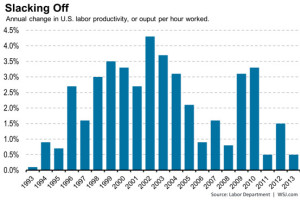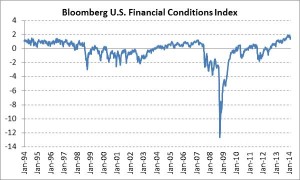Businesses struggled to squeeze much more out of their workers last year.
A downward revision to fourth-quarter productivity lowered the gain for all of 2013 to just 0.5%, the Labor Department said Thursday. The small increase ties with 2011 for the weakest annual improvement since 1993.
Labor productivity, or output per hour, strengthened early in the economic recovery as businesses grew more efficient. The measure increased 3.1% in 2009 and 3.3% in 2010, to mark the best annual improvement since 2003. But gains have slowed considerably since, measuring 0.5% in 2011 and 1.5% in 2012.
The recent weakness was most pronounced in nondurable manufacturing, a sector that includes the processing of food, chemicals and petroleum, as well as textile and paper production. Sector productivity slipped 0.1% last year because output improvements were more than offset by increased hours worked.
The easing of productivity is a bit of a double-edged sword. The weak gains hold back the economy’s potential to grow. But it also could signal that businesses are finding it more difficult to meet demand with their existing workforce and equipment.
If companies can’t squeeze more out of current workers, they might need to ramp up hiring and capital investment.
(Source: Wall Street Journal)


